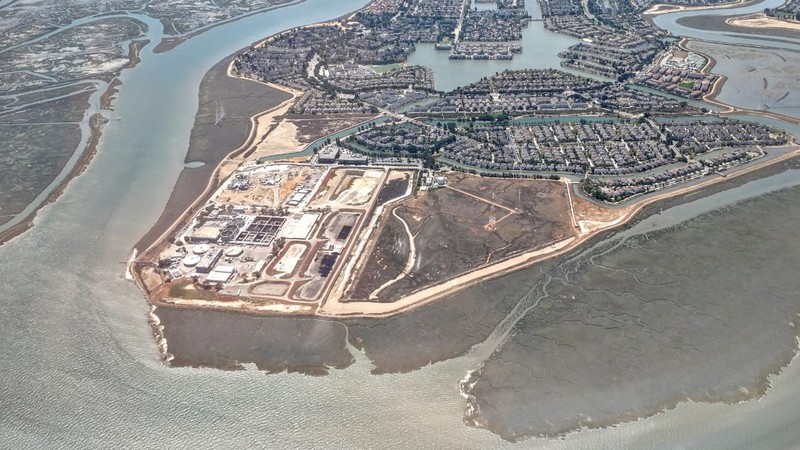Municipal bonds fund water systems, school buildings, parks, police stations and other public projects that require voter-approved money.

Municipal bonds built the Redwood Shores water treatment plant in Redwood City, California. Alfred Twu CC0 1.0 Universal
Infrastructure is Expensive…
All of the muicipal services we take for granted require a lot of costly infrastructure. As just one example, the City of Manteca in San Joaquin County is experiencing a population boom and needs to come up with $623 million to upgrade its water and wastewater systems.
Need a new firehouse? Millions. Need a new school? More millions. Then once built, they need to be upgraded every 15 to 20 years and replaced every 40 to 50 years.
…So Governments Borrow to Pay for Infrastructure.
When counties, municipalities, and the districts responsible for schools, fire protection and municipal water service need to come up with those millions of dollars, they borrow it using municipal bonds.
A municipal bond is a “debt security” sold to institutional and private investors who receive periodic interest payments until the maturity date, when they are paid back their principal. Investor income from bond payments is generally tax free as an incentive to bondholders to invest.
The two most common types of municipal bonds are:
In California, bonds must be approved in elections by two thirds of the voters in the jurisdiction for which the bonds are to be issued.
Proposition 5 on the November 2024 ballot seeks to reduce the voter approval majority to 55% for various categories of projects, such as the construction of affordable housing, hospitals, police stations and parks.
California voters already approved Proposition 39 in 2000, which decreased the threshold necessary to pass school bonds from a two thirds supermajority to 55%.
The limit of total bond capacity for a government entity is established in different ways. My home town, the City of Santa Cruz “is allowed to issue general obligation bonds under Section 1418 of the City Charter with a limit that cannot exceed the sum of 15% of the total assessed property valuation for the purpose of the city's taxation.”
The California Constitution (Proposition 13) sets the property tax rate at 1 percent, and also “permits adding to the 1 percent tax rate a rate needed to pay interest and redemption charges for voter-approved indebtedness.” Itemized obligation bond assessments appear on property tax statements, along with the direct phone number to the related government district so a taxpayer with questions can get answers.
The credit worthiness of bond issuers is established by third party rating services. In general, the higher the bond rating, the lower the bond yield. Bond issuers with lower ratings often need to offer bonds at higher yields to entice investors to purchase higher risk bonds.
Borrowing to Pay for Other Obligations
While we’re focused here on the use of bonds to fund the cost of building infrastructure, in some cases they may be used to finance other costs. One example is the Pension Obligation Bond, which is used to borrow money at low interest rates to finance higher yield investments to cover the unfunded portions of a government’s employee pension liabilities. It’s a risky play, and the Government Finance Officers Association flatly warns state and local governments not to do it.
Pension liabilities are a growing problem in California, with the combined state, county and municipal pension debt estimated at about $250 billion as of 2024. Unfunded pension obligations are a problem here in Santa Cruz County, as several local municipalities have issued Pension Obligation Bonds over the last 20 years.
California’s Ballooning Debt
Every year, new bond measures are up for consideration by voters on state and local ballots.
The current combined state and municipal debt stands at about $1.6 trillion. As California faces mounting costs from climate crisis-induced extreme weather and wildfires, it’s only going up, with repayments taking up an ever growing share of future annual revenues.
Meanwhile, all the folks in Manteca need their faucets to keep running and their toilets to keep flushing.
Long form articles which explain how something works, or provide context or background information about a current issue or topic.